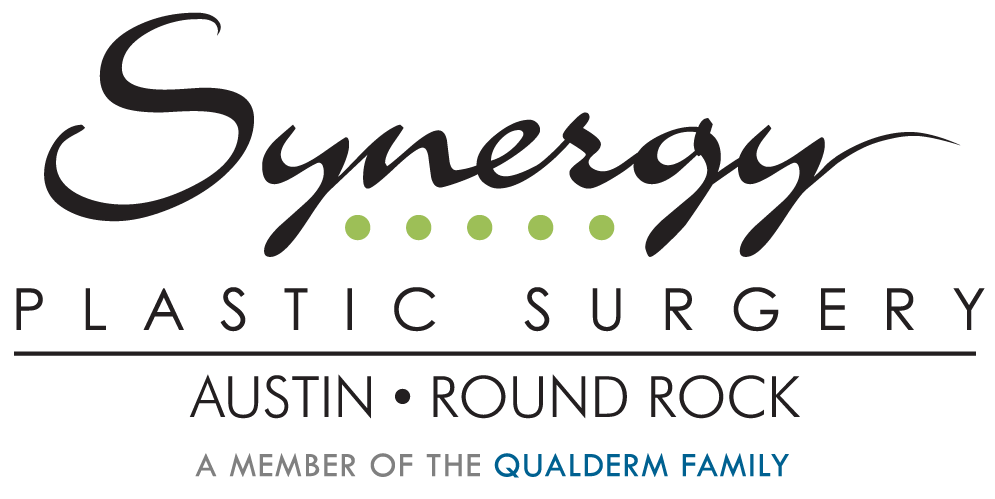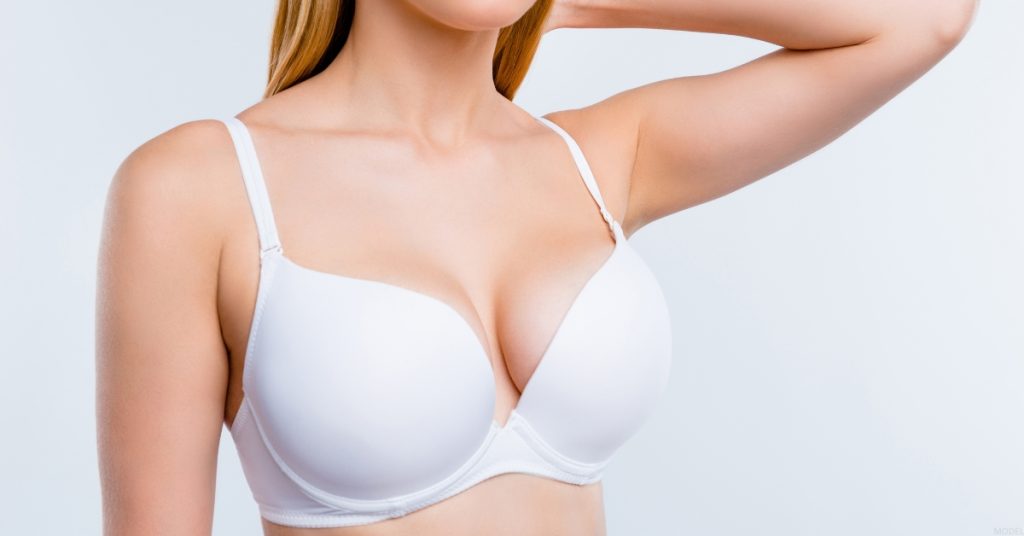When it comes to enhancing your breast shape and size, today’s patients have more options than ever before. Patients can choose between breast augmentation with fat transfer vs. implants to achieve their ideal look—and many combine both for a “best of both worlds” approach.
Below, we share the benefits and limitations of fat transfer breast augmentation as an alternative (or complement!) to breast implants. Ready to learn more?
Beauty In Every Detail
Real patients, real life-changing transformations. See the results that are possible in our before-and-after gallery.
View Photo GalleryHow Does Breast Augmentation Work?
Breast augmentation surgically enlarges the breasts for a fuller, shapelier appearance. The 2 options (implants and fat transfer) follow different steps but lead to the same beautiful result:
- Fat transfer, also known as fat grafting, uses liposuction to collect fat from one area of your body (such as the abdomen or thighs) to redistribute to another. In natural breast augmentation, the fat is purified and then carefully injected into the breasts to enhance their shape and size.
- Breast implants, on the other hand, involve placing a saline or silicone implant behind the breast tissue or chest muscle to create a fuller, rounder appearance.
Who’s a Good Candidate?
If you’re trying to weigh the benefits of natural breast enhancement vs. implants, it helps to understand who benefits most from each:
- Fat grafting may be best for you if:
- You want a modest increase in size.
- You prefer a subtle, natural look.
- You have excess body fat that can be collected.
- You want to avoid synthetic implants.
- Implants may be the right fit if:
- You want a significant size increase.
- You have a petite frame and little body fat to harvest.
- You’re looking to enhance volume and upper pole fullness.
- You want predictable, long-term results.
Benefits of Fat Transfer to the Breasts
Fat transfer appeals to women who may feel uneasy about having implants in their bodies. At Synergy, we respect that choice and are dedicated to helping patients reach their aesthetic goals in whatever way best aligns with their comfort, safety, and needs.
Other key benefits of using your own fat for breast augmentation include:
- Body contouring: Improved contour in the midsection, thighs, or derrière can enhance your breast augmentation results and your overall physique.
- No breast incisions: After your surgeon extracts the fat using liposuction, it is washed in saline and separated from blood, fluid, and cell debris. It is then injected into the breasts using a specialized syringe. The incisions needed for inserting implants aren’t part of the procedure, thereby avoiding scarring on the breast and contributing to a quicker recovery window.
- No foreign materials: Using your own fat to enhance the breast avoids many of the safety and longevity concerns related to implants. Some women prefer the peace of mind that comes with using a natural source of volume.
Limitations of Fat Grafting for Breast Augmentation
While breast fat transfer presents a less invasive and more natural alternative for women, it is not an ideal approach for all breast augmentation patients. Women who want to pursue fat transfer need enough excess fat to make it a viable option.
Another drawback for women considering natural-looking breast augmentation is that the procedure is only appropriate for patients who want a modest increase in breast size. Usually, the technique can produce an increase of between 1 and 2 bra cup sizes at most.
Other limitations to consider include:
- Less predictable outcomes: Not all fat transferred to the breasts will “take” or survive after the procedure. The percentage of transferred fat that can establish a blood supply and survive the process varies, although many estimate it to be between 40% and 80%.
Some plastic surgeons may compensate for this fact by injecting more fat than needed to create the desired results or by planning for touch-up procedures once your results have settled fully.
- Liposuction recovery: The fat transfer technique involves 2 recovery sites—the breasts and the liposuction site. Although the recovery is very manageable, patients should consider this fact when weighing their options.
- Additional cost: Adding liposuction to breast enhancement extends the time needed for surgery and makes the procedure cost more.
What Kind of Results Can You Achieve With Breast Augmentation?
Because it uses your own tissue, you can often achieve the most natural look and feel with fat transfer compared to implants. This option is particularly appealing for women who want their augmentation to go unnoticed by others.
Implants, on the other hand, offer more dramatic volume changes and come in a wide range of sizes and shapes. While some implants may feel firmer than natural tissue, today’s cohesive silicone (gummy bear) implants are designed to closely mimic the natural slope and appearance of the breast. If a natural look is your top priority, your board-certified plastic surgeon can guide you toward the most natural-looking breast implants or help determine if fat grafting will better meet your needs.
Are There Differences in Recovery?
Fat grafting typically involves a shorter recovery time but includes healing in 2 areas: the breasts and the donor site (such as the abdomen). Patients often experience some bruising and swelling, but most return to normal activity within a week.
Implant surgery may involve slightly more downtime, particularly if the implant is placed under the muscle. Our Rapid Recovery protocols typically shorten the initial healing time from 2 weeks to 1 week. Full recovery can take up to 4 to 6 weeks, and any discomfort is usually well managed with prescribed medications and comprehensive postoperative care.
What About Longevity?
Breast implants typically last 10 to 15 years, though some may need replacement sooner due to rupture, deflation, or personal aesthetic preferences. Fat grafting, in contrast, involves permanent integration of fat cells that successfully establish a blood supply in the breast tissue. However, not all the transferred fat survives, and the body may reabsorb a portion within the first few months. Some people may need touch-up fat grafting procedures to maintain volume over time. You can explore this topic further in our blog post on how long fat transfer lasts.
How Much Does Each Procedure Cost?
The cost of breast augmentation varies depending on the method. Fat transfer breast augmentation often costs more upfront, as it involves both liposuction and fat grafting. However, the absence of implant-related costs (such as future revision surgery) may balance the long-term investment.
Combining Fat Transfer With Breast Implants
Combining fat transfer with breast implants can be a highly effective way to achieve more natural-looking results. For patients with implants placed above the pectoral muscles, the added fat helps soften transitions and camouflage the edges of the implant—reducing the risk of visible rippling, a common concern with this placement.
A hybrid breast augmentation combines saline, silicone, or gummy bear implants with fat grafting for a tailored and refined result. When skillfully performed, fat transfer smooths the upper breast contour and can enhance overall body proportions.
This approach may be ideal for patients who:
- Have implants placed above the pectoral muscles
- Have little natural breast tissue
- Are undergoing breast reconstruction
During your consultation, we will help you choose the breast implants that best complement your frame while assessing your candidacy for fat grafting. If your breasts are sagging or drooping, we may also recommend combining these techniques with a breast lift for the best results.
Making the Right Choice for Your Body
Choosing between fat grafting and implants for breast augmentation isn’t always straightforward. It depends on your desired enhancement, your preferences for natural tissue versus implants, and your overall body composition.
Whether you’re leaning toward implants or are curious about a fat transfer procedure, the best way to move forward is with a personalized consultation. Our board-certified plastic surgeons are here to help you look and feel your best on your terms.
Request a consultation online or call us at (512) 244-1439 to schedule your appointment today.



Leave a Reply